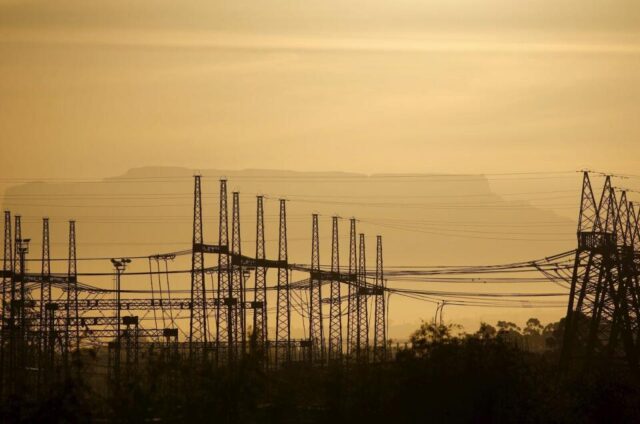Power utility Eskom, in its State of the System briefing, has once again failed to reassure the country of its grip on the power grid as it cited a lack of capacity and finance to execute planned maintenance.
ESKOM, in its State of the System briefing, once again failed to reassure the country of its grip on the power grid as it cited a lack of capacity and finance to execute planned maintenance.
This as the power utility has a new headache in recruiting a new head for generation after acting head, Rhulani Mathebula, on Tuesday resigned with effect from the end of the month.
Chief operating officer Jan Oberholzer said Mathebula had said he was quitting due to work pressure, which affected his health and family life.
Mathebula has acted in the position since January and Oberholzer said the utility had not procrastinated on appointing a permanent person but that the role required numerous ticks on the scoreboard.
There were also insufficient funds to cater for outages as the utility is forced to fork out about R12 billion this year so far on diesel to run the Open Cycle Gas Turbines (OCGTs) – double its annual budget.
The utility is currently operating at 59% energy availability factor (EAF), way down from the 75% anticipated by new chairman Mpho Makwana.
Acting generation CEO Thomas Conradie said it was hard going to achieve at least 65% EAF and anticipated reaching only 60% by the end of the current year, against the desired 75% EAF benchmark, as a series of breakdowns at six major power stations take away more than 19,000 kilowatts, while the best three performers, Medupi, Matimba and Lethabo, are humming well enough to keep the grid alive.
In the briefing on Tuesday, executives painted a picture of a system inherently unreliable and that could not be properly maintained because of the need to constantly balance available electricity and the country’s demand.
Eskom said the rains had provided some relief and enabled the generation of electricity without the use of diesel as some catchment areas had recovered sufficiently.
Oberholzer said, “We need additional capacity as soon as the day before yesterday. We have significant challenges and have to do load shedding as a financial strategy because we do not have the money. We cannot spend what we do not have, we have to keep on burning diesel while municipalities owe us more than R52 billion.”
He skirted earlier speculation that the diesel bill could go up to R60 billion by the end of the year, but said that as long as the current practices required the use of OCGTs, the utility would need far more money.
The initial budget for diesel was R6bn and an additional R5bn provision was made, which too has been surpassed.
He was at pains to point out the conscientious nature of the utility, saying load shedding was always a last resort in which they considered the impact on lives of ordinary people.
“Sometimes we sit there and ask ourselves who is writing exams, how can we be easier on them. Sometimes we say let’s make sure people rush through the traffic before we effect load shedding,” he said.
The utility is holding its breath for the debt relief pledged by National Treasury, which Eskom hopes covers municipal debt. Monde Bala, the group head of distribution at Eskom, outlined that the municipal debt grew from R2.6bn in 2014, R20bn in 2020 and has shot up to R52bn in the current year to September.
Eskom, which has so far this year effected more than 155 days of load shedding, is pinning its hopes on a 24-month recovery programme which is intended to claw back at least 6,200MW.
Eskom said though coal stock levels were healthy – average of 35.0 days of stock, 69.7 stock-days when including Medupi, which has excess coal – there were still concerns about the quality of the coal, suspicions stemming from the work of a syndicate skimming export quality coal to on-sell.
Eskom is also trying a balancing act with the utilisation of Koeberg whose Unit 2 has been recommissioned after an extensive process of changing steam generators.The utility had to revise its maintenance period for the utility after studying international benchmarks which indicated longer period were required to execute extension of life procedures.
Eskom said Unit 1 would commence a long refuelling and maintenance outage in December 2022 during which the three steam generators will be replaced, Unit 2 would undergo a similar refuelling and maintenance outage towards the end of 2023.
– BUSINESS REPORT








